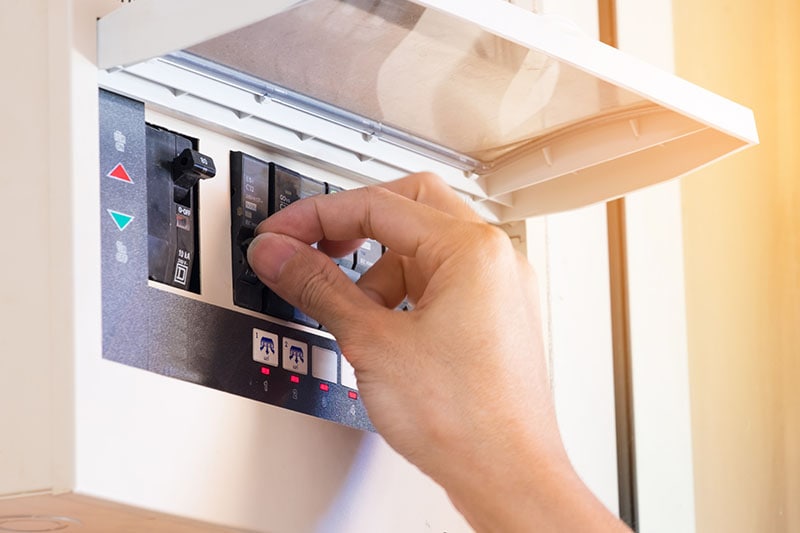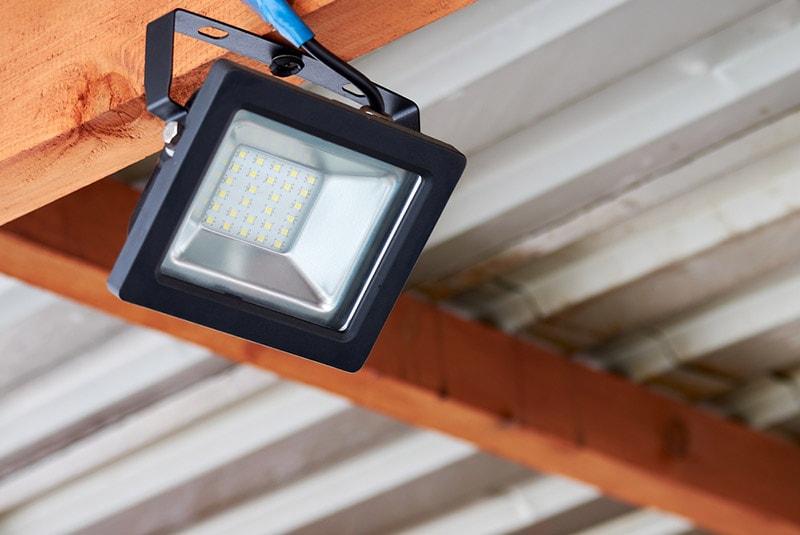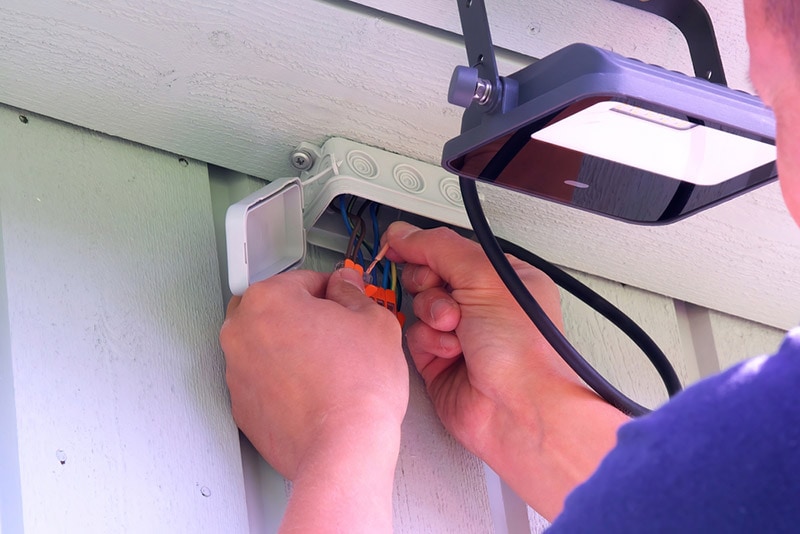How to Install Flood Lights: 7 Tips & Tricks
-
Pete Ortiz
- Last updated:

Flood lights are a type of external light that bathe a large area in light. They are brighter than spotlights, and they cover a much larger area. Although they can be used to provide lighting for convenience, they are typically used as a means of increasing security outside a property and are combined with motion sensors so that they switch on if an intruder walks within the range of the motion sensor.
You can have flood lights installed by a professional, or you can attempt the job yourself, but it does require some electrical work, so if you aren’t confident with wiring and with running a new fitting off an existing electrical circuit, get somebody to do the job for you.
Below are the steps, and some tips, to help you with your flood light installation.
The 7 Tips to Install Floodlights
1. Choose the Best Placement

Getting the right placement is important. You need the light placed somewhere where it will offer good coverage of the area you wish to protect, but if it uses motion sensors, you don’t want it being set off whenever somebody walks or drives past your property. The light should be placed high up to prevent potential intruders from being able to turn them off or cut the wire. Once you’ve determined the best spot for your flood lights, mark it with a piece of tape, so it is easily spotted, and you won’t forget exactly where you want the fitting.
2. Find a Power Source That Can Handle the Load
Floodlights run off main power, which means that you will likely need to run power from an internal outlet or another switch. When choosing a power source, make sure that you won’t overload the circuit. You should only use 80% of a circuit’s total load capacity so a 20-amp circuit should only have 16-amps of equipment. And if the maximum wattage is 2,400 watts, you should only use 1,920 watts.
3. Turn Off the Power

Before you start drilling into the walls or wiring the device, turn the power off. Turn off power to the circuit you are using or, if in doubt, turn off power to the whole house to be sure that you can do the job safely. You can use a voltage tester to make sure that there is definitely no power in the circuit, rather than relying on a dead switch.
4. Connect Wires
Once you’ve drilled a hole and passed the cable through the hole, it is time to connect the wires. The wires should be colored the same as the wires in your box or on your circuit. Connect the ground wire first by twisting the ground wire from the appliance to the ground wire in your circuit box. Then connect the white wires in the same way, and then the black wires. Use a wire connector to secure the connections and wrap them with electrical tape before pushing the wires into the box and securing the cover.
5. Adjust Angle

Now you can adjust the angle of the light to ensure that it covers the entire area that you want. Ensure that the light is aimed at the ground. This gives the best possible dispersion of light and ensures that the area is fully bathed in light. It also prevents directing bright lights into neighbors’ windows.
6. Test the Light
Once you’ve connected everything and angled the light, restore power to the circuit and then turn the light on. Ensure that it works from the main switch and, if there are motion sensors, make sure that the motion sensors are also working properly, too. If the light works as expected, the installation is complete. If you need to make any adjustments to the angle, most manufacturers recommend turning the light off first.
7. If in Doubt, Get Help

Not everybody is confident or competent working with electricity. If you are in any doubt, enlist the help of a professional installer. They will be able to finish the job in a fraction of the time it will take you and they will ensure that everything is done safely and professionally.
In Conclusion
Flood lights can offer peace of mind and security to a home. They typically work with a motion sensor so that they turn on whenever somebody passes the sensor, but they may also be turned on and off at the switch.
Installation is relatively simple if you’re confident working with electricity and running new fixtures from existing circuits and circuit boxes. Otherwise, it is a good idea to get a professional installer to fit the lights for you, preventing any injuries or damage to the device and your home’s electrical system.
- https://www.electricalworld.com/en/Blog/Hooking-Up-Outdoor-FloodlightsMotion-Lights/bl-50.aspx
- https://www.lepro.co.uk/learning/what-is-floodlight/
- https://blog.lightbulbs-direct.com/choosing-perfect-outdoor-floodlight/
- https://www.wikihow.com/Install-Flood-Lights
- https://www.truevalue.com/diy-projects/post/maintenance-and-repair/lighting-and-electrical/install-outdoor-floodlights
- https://www.lepro.co.uk/learning/how-to-install-outdoor-led-flood-lights/
- https://newswatchtv.com/2022/05/23/5-tips-for-installing-the-outdoor-led-floodlights/
Featured Image Credit: Ascannio, Shutterstock
Contents


